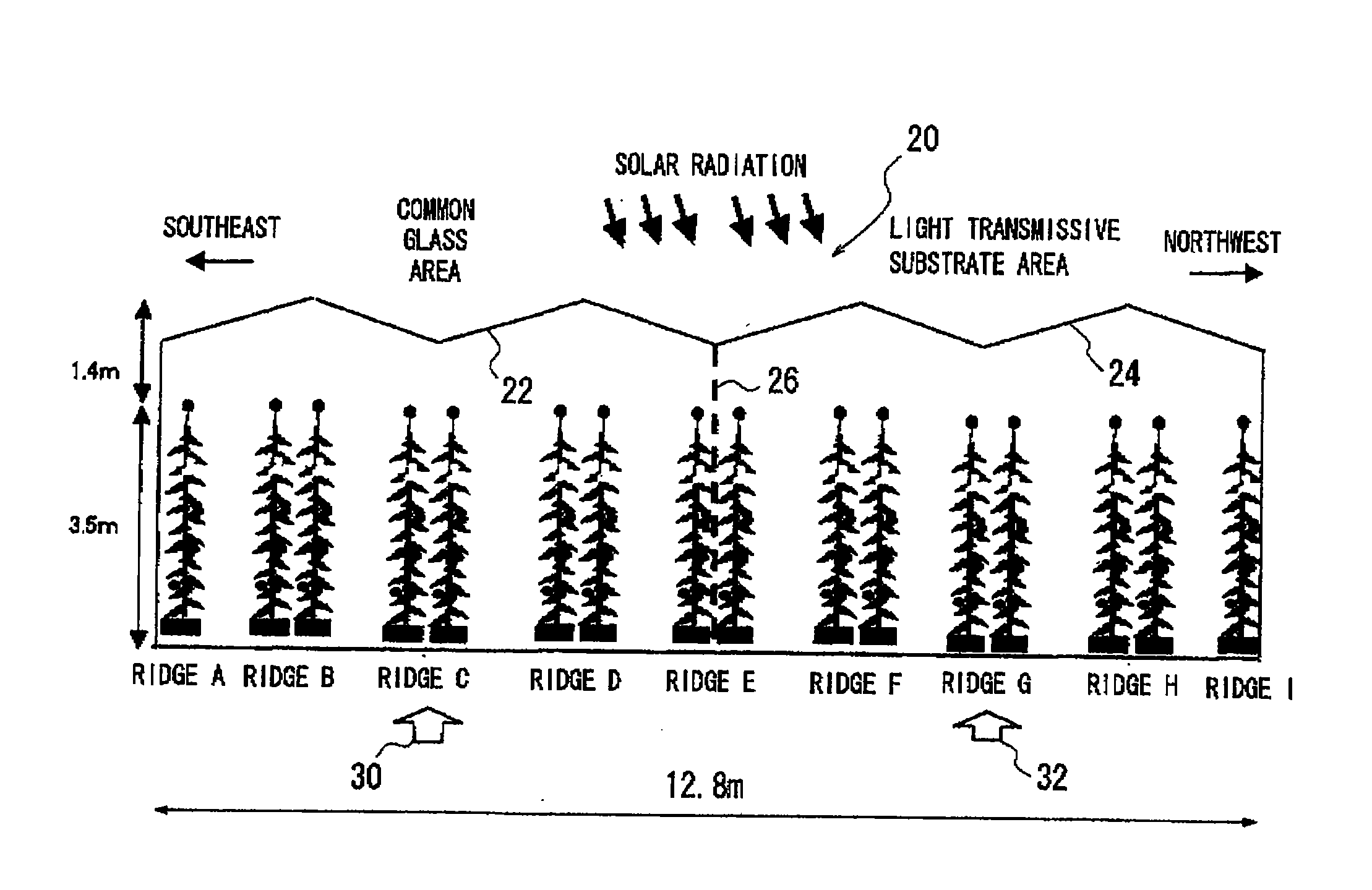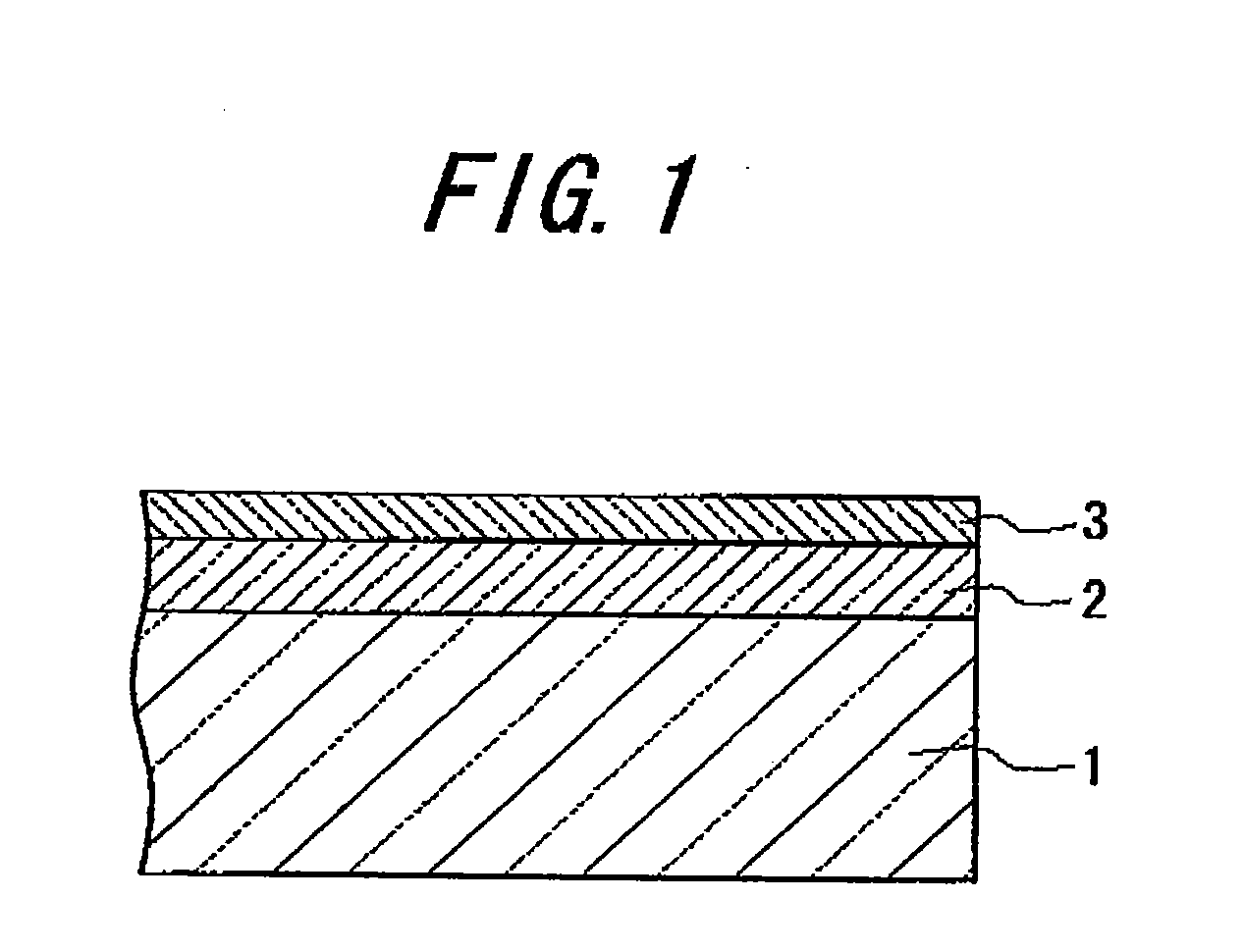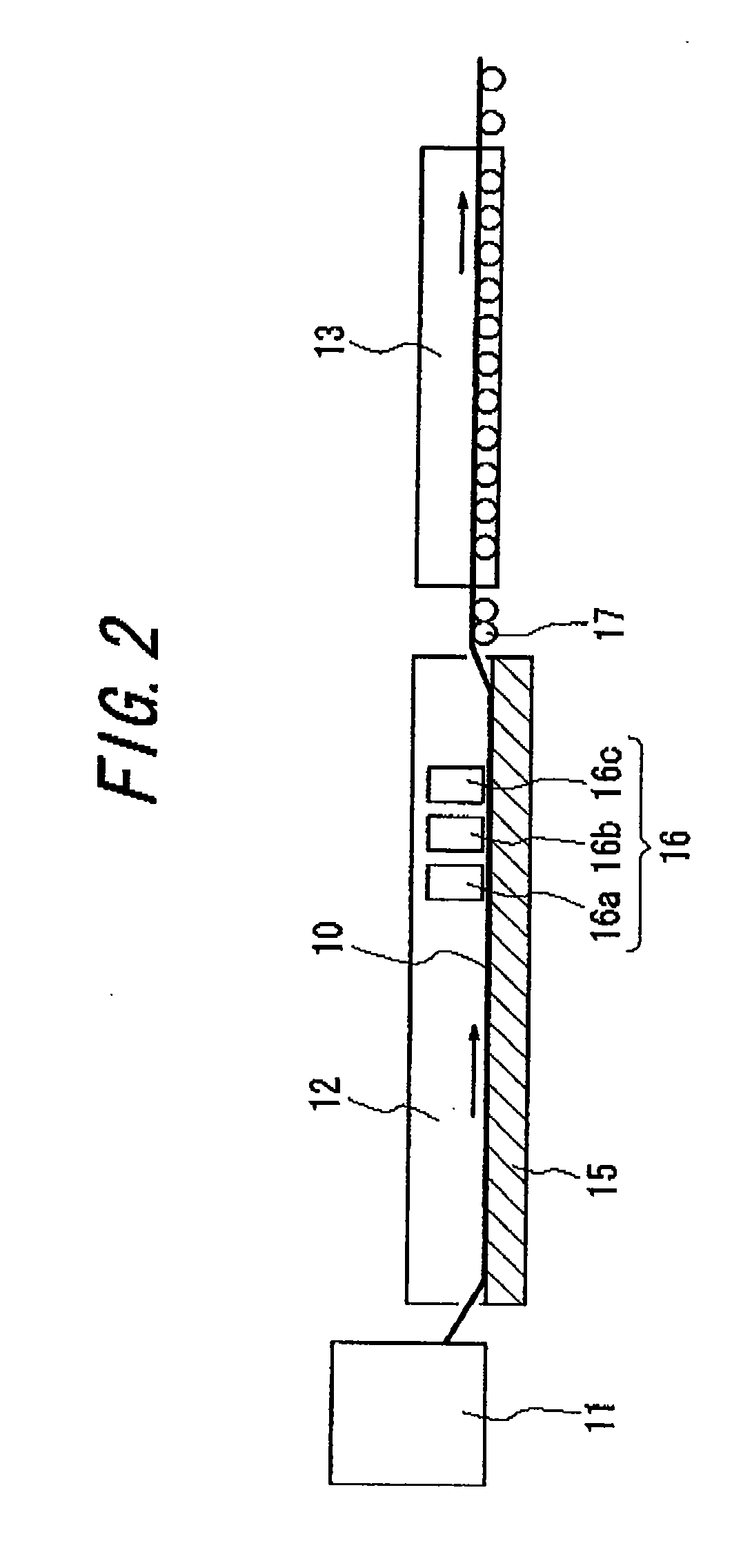Greenhouse, method for growing plants using the same, and light transmissive substrate
- Summary
- Abstract
- Description
- Claims
- Application Information
AI Technical Summary
Benefits of technology
Problems solved by technology
Method used
Image
Examples
example 1
[0118]Utilizing an online CVD method, a high-refractive index film, third low-refractive index film, transparent conducting film, and first low-refractive index film were formed on the glass ribbon in this order. Specifically, 98 volume % of nitrogen and 2 volume % of oxygen were introduced into the float bath space, maintaining a slightly higher pressure inside the float bath compared to the outside. While maintaining a non-oxidizing atmosphere inside the float bath, a gas mixture of dimethyltin dichloride (vapor), oxygen, water vapor, nitrogen, and helium was introduced from the first coater located at the uppermost part of the line to form a high-refractive index film made of 25 nm-thick tin oxide on the glass ribbon. Next, a gas mixture of monosilane, ethylene, oxygen, and nitrogen was introduced from the second coater to form the third low-refractive index film made of 25 nm-thick silicon oxide on the high-refractive index film. Then, a gas mixture of dimethyltin dichloride (va...
example 2
[0130]Next, the relationship between the surface condition of the glass and the dropping of the water droplets was investigated. Glass is often used as the roof light on the roofs of large bathhouse, hot spring facilities, and plant greenhouses. Under high temperature environments, the water that condenses on the inside surface of the roof grows gradually and escapes from the glass as a large water droplet. At that point, depending on the hydrophilicity and condition of the inside surface of the glass, water droplets may spread like a sheet and not fall from the glass surface, or may form a spherical droplet and fall vertically at the place of condensation. This is also related to the slope of the roof. That is, if the slope of the roof is steep, spherical droplets will not fall at the place of condensation and will travel on the inside surface to reach the glass edge.
[0131]When this kind of condensation occurs in a plant greenhouse, the water drops that fall vertically from the pla...
example 3
[0134]Next, using various light transmissive substrates prepared as mentioned above, energy load calculation results were investigated. As for the energy load calculations, the winter heating-load calculations for December to March were carried out using SMASH (Institute for Building Environment and Energy Conservation).
[0135]
1. Calculation Model Dimensions (Rectangular Parallelepiped Model)
[0136]SMASH is a heating-load calculation program for residential houses, and cannot calculate directly for large-scale structures. Therefore, in order to assume a greenhouse of the following dimensions and calculate for it, the method of estimating a 1 / 1 model from calculations implemented on a 1 / 10 model was used to calculate heating load of the glass greenhouse (the glasses of the example 1, comparison example 1, or comparison example 2 were used for the entire surface of the curtain walls and the roof) of the following dimensions. That is, the results of the heating-load calculations of the 1...
PUM
| Property | Measurement | Unit |
|---|---|---|
| Surface roughness | aaaaa | aaaaa |
| Transmittivity | aaaaa | aaaaa |
| Transmittivity | aaaaa | aaaaa |
Abstract
Description
Claims
Application Information
 Login to View More
Login to View More - R&D
- Intellectual Property
- Life Sciences
- Materials
- Tech Scout
- Unparalleled Data Quality
- Higher Quality Content
- 60% Fewer Hallucinations
Browse by: Latest US Patents, China's latest patents, Technical Efficacy Thesaurus, Application Domain, Technology Topic, Popular Technical Reports.
© 2025 PatSnap. All rights reserved.Legal|Privacy policy|Modern Slavery Act Transparency Statement|Sitemap|About US| Contact US: help@patsnap.com



